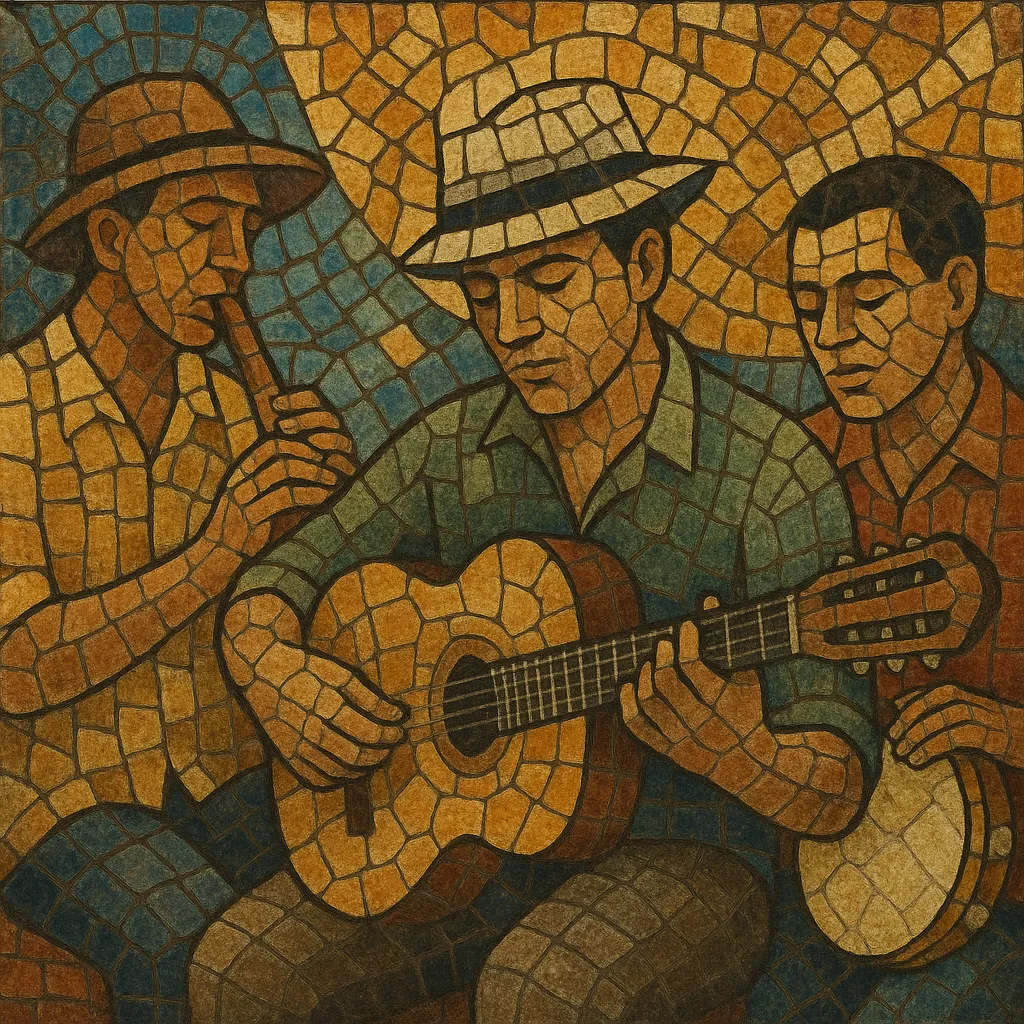Choro is an urban Brazilian instrumental genre that arose in Rio de Janeiro in the late 19th century. It blends European dance forms (polka, schottische, waltz, mazurka) with Afro-Brazilian rhythmic sensibilities from styles like lundu and early maxixe, producing a supple, highly syncopated groove.
Typical choro ensembles (regionais) feature a lead melodic instrument—often flute, clarinet, or bandolim (mandolin)—supported by cavaquinho and 6-string guitar for harmony, a 7‑string guitar providing counter-melodic bass lines (baixarias), and pandeiro for light percussion. Pieces commonly use multi-strain forms (e.g., AABBACCA), incorporate modulations, and encourage melodic variations and counterpoint rather than long harmonic solos. The result is music that is both virtuosic and lyrical, at once salon-refined and street-savvy.
Choro emerged in Rio de Janeiro in the 1870s as Brazilian musicians personalized popular European dances—polkas, schottisches, waltzes, and mazurkas—with Afro‑Brazilian syncopation and phrasing derived from lundu and related practices. Early figures such as flautist Joaquim Callado and composer Chiquinha Gonzaga helped codify a virtuosic, ornamented style for small urban ensembles. The term “choro” initially referred more to a way of playing than a fixed repertoire, but it soon became both style and genre.
By the early 20th century, choro repertoire and practice matured. Ernesto Nazareth bridged salon and street idioms, while Pixinguinha became the genre’s towering innovator—expanding harmony and orchestration, composing standards, and touring with Os Oito Batutas. Radio and recording industries spread choro widely, and the roda de choro (informal jam circle) tradition reinforced its social and pedagogical role.
Despite the rise of samba-canção and later bossa nova, choro persisted through ensembles and champions like Jacob do Bandolim and Época de Ouro, Waldir Azevedo, Altamiro Carrilho, and Abel Ferreira. The 1970s saw organized revival efforts and clubs (e.g., Clube do Choro in Brasília), archival projects, and renewed interest among younger players.
From the late 20th century onward, choro regained international visibility. New generations—Hamilton de Holanda, Yamandú Costa, and many others—expanded technical and harmonic language while honoring roda traditions. Festivals, schools, and recordings in Brazil and abroad have sustained a living lineage that continues to influence broader Brazilian popular music and jazz‑adjacent idioms.


